Scientific Name
Zingiber officinale var. rubrum Theilade
Synonyms
No documentation.
Vernacular Name
| Malaysia | Halia udang, halia merah, halia bara [1] |
| English | Ginger [1] |
| Indonesia | Jahe merah [2], sunti, halia barah, halia udang [3]. |
Geographical Distributions
Zingiber officinale var rubrum is originated from South East Asian countries. However, it is now widely found through out Asia. [4]
Botanical Description
Z. officinale var. rubrum is a member of the family Zingiberaceae. The growth habit of halia bara is almost similiar to that of common halia. However the plants are much smaller and normally grow only to about 30-60 cm in height. [1][4]
The leaves are green in colour and narrow (measuring about 5 cm wide and 30 cm long). [1][4]
The flowers are yellowish red. [1][4]
The rhizome is bright red in colour, branched and arranged laterally under the soil surface. [1][4]
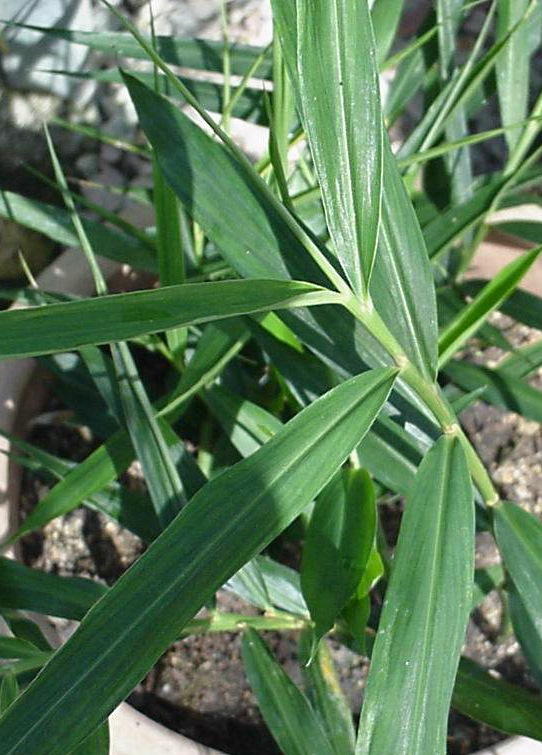
Cultivation
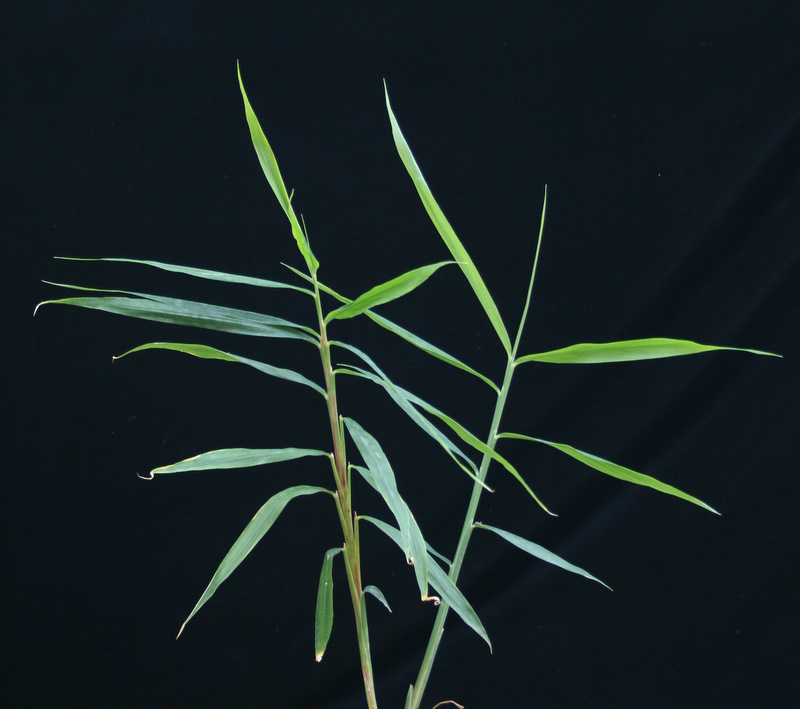
Soil Suitability and Climate Requirement
Z. officinale var. rubrum is well adapted to tropical climates and found growing all over Malaysia. The total annual rainfall for optimum growth is 1,000 to 2000 mm. Supplementary irrigation is however required during drier months. The plant can grows on many different soil types but it is suited for well-drained sandy loam with high organic matter content. [4]
Field Preparation
Land Preparation
Good land preparation is important in the successful production of Z. officinale var. rubrum. The soil should be plough at least twice by using the disc plough followed with roto-ridger. GML has to be incorporated into the soil at least 4 weeks before field planting. Bed is prepared after soil preparation especially for soil with poor drainage. The bed is normally 60-100 cm wide and 25-30 cm high. The distance between each bed is 30-50 cm. [4]
Production of Planting Materials
Z. officinale var. rubrum is propagated by using matured rhizomes. Matured rhizomes are dark red in colour. The rhizomes are cut into about 5 cm segments with 2-3 growing buds per cutting segments. For maximum germination, these cuttings are kept under moist conditions for a few days until the cuttings starts to sprout. The planting materials should be soaked in fungicide solutions and dried before field planting. About 1,500 kg of planting material is required for a hectare of field planting. [4]
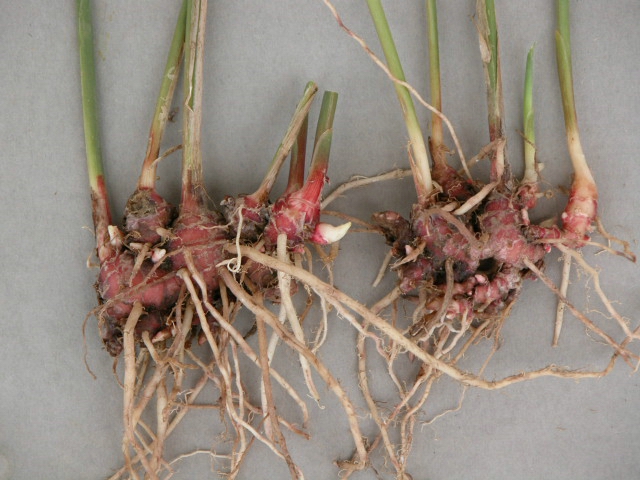
Field Planting
Z. officinale var. rubrum planting should be done at the onset of raining seasons. This will minimises the effect of transplanting stress. The recommended planting distance is 60 cm x 75 cm. This will give the population density of about 22,000 plants/ha. At this planting density, about 1.5 t/ha of planting materials is required. The sprouted rhizomes are sown about 8 cm deep with the growing buds upright. Mulching using dried coconut leaves or rice straw should be done 2-4 weeks after planting when newly developed leaves just appear. This is done to avoid leaf scorching, which could lead to leaf spot disease. [4]
Field maintenance
Fertilisation
For optimum crops growth of Z. officinale var. rubrum, both the organic and inorganic fertilizers are required. For the mineral soils, the organic fertilizer (chicken dung) is applied at the rate of 5-8 t/ha. This should be given as basal dressing at about 1 week before planting. The inorganic compound fertiliser NPK (12:12:17:2+TE) at the rate of 1.5 t/ha is split into 5 equal portions and applied at 5, 10, 14, 16 and 20 weeks after planting. Higher rates of both the organic and inorganic fertiliser is required for sandy soils like bris or tin tailings. [4]
Weed Control
Weed control is done once in 2-3 months. Each weeding cycle is normally done together with hilling. Hilling is actually raising up the soil at the plant base to cover the rhizome from being exposed to sunlight and to encourage growth. Mulching using rice straw or dried coconut leaves helps to control weeds, avoids bed slacken off, controls nutrient loss and maintains soil moisture. [4]
Water management
For optimum crop growth, supplementary irrigation is needed especially during the dry season. Sprinkler irrigation system is recommended. [4]
Pest and Disease Control
Stem borer (Udapes falus) and armyworms (Spodoptera litura ) are the main insect pests of Z. officinale var. rubrum. The borer makes holes in the stem and subsequently leaves will turn yellowish and dried. Bacterial wilt is the major disease that could lead to great loss in halia bara production. The disease is caused by Pseudomonas solanacearum. The symptom is the yellowing of lower leaves and spreads to the upper leaves. The leaves subsequently become brown, wet, soft and easily detached from the stem. Planting using treated planting materials and alternating the area with other crops and practicing good sanitary practices can reduce this disease problem. [4]
Harvesting
Z. officinale var. rubrum reaches its full maturity at 8-9 months after planting. Maturity can be determined when the leaves starts to dry up. The crop is harvested manually using a hoe. The rhizome is cut from the stem. The potential fresh yield of matured halia bara is about 17 t/ha. [4]
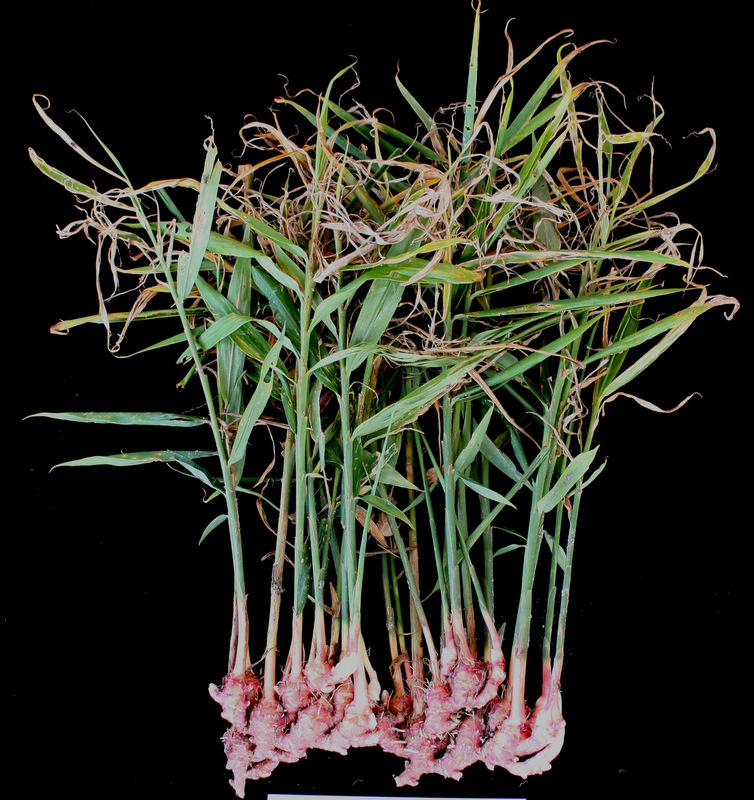
Figure 4: Matured Z. officinale var. rubrum. [4]
Postharvest handling
The Z. officinale var. rubrum rhizomes have to be cleaned from soil and dried leaves by washing under running water. Care should be taken not to avoid bruising since this will lead to reduction in its quality. Keeping the rhizomes at the room temperature for about 4-5 days under shade helps the formation of the protection layer outside the rhizomes. This will ensures that the rhizomes can be stored better. [4]
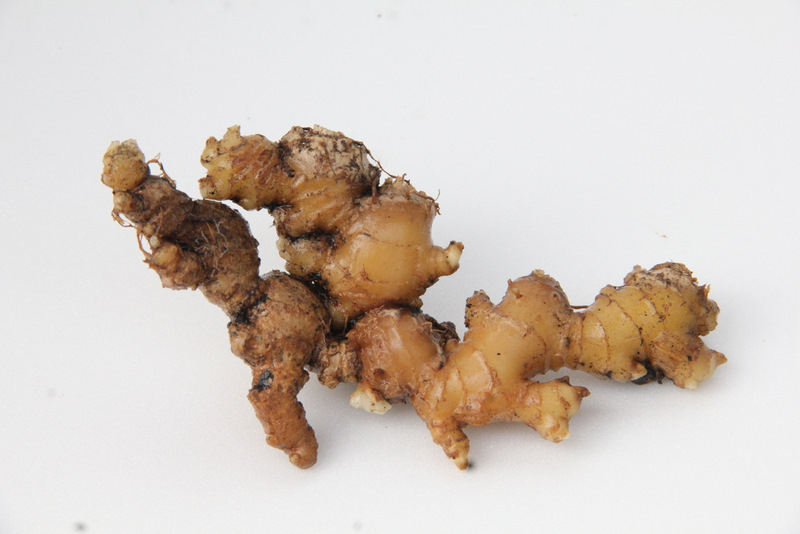
Figure 5: Z. officinale var. rubrum for marketed purposes. [4]
Estimated cost of production
The production cost of Z. officinale var. rubrum per hectare for land preparation, input and labour is about RM34,000. The production cost per kilogramme depends on the yield per hectare. Thus, the production costfor a 17 t/ha of fresh rhizomes is about RM2.00/kg. The production cost was estimated based on the cost of current inputs during writing of this article. [4]
Chemical Constituent
Methanol extract of Z. officinale var. rubrum dried rhizome has been reported to contain 6-gingerols and 6-shogaols. [5]
Ethanol extract of Z. officinale var. rubrum dried rhizome of has been reported to contain amino acids (e.g. glutamine, glutamic acid, threonine, leucine, lysine, valine and tyrosine). [6]
Methanol extract of Z. officinale var. rubrum dried rhizome has been reported to contain flavonoids (e.g. quercetin, rutin, catechin, epicatechin and kaempferol). [7]
Phosphoric acid extract of Z. officinale var. rubrum dried rhizome of has been reported to contain phenolics (e.g. gallic acid and ferulic acid) and cyano group (cyanide). [7][8]
Essential oil of the Z. officinale var. rubrum rhizome has been reported to contain monoterpenoids (e.g. camphene, geranyl acetate, geranial, neral, geraniol, 1,8-cineole [9] and oxygenated monoterpenes (e.g. E-citral, β-citronellol, trans-geraniol and borneol). [10]
Plant Part Used
Rhizome [4]
Traditional Use
The mature Z. officinale var. rubrum rhizomes are used as the flavouring agent in cooking and medicinal preparations. The rhizomes are also used for the extraction of essential oil and oleoresin. In Malaysia it is planted on small-scale basis and used in the preparation of herbal tonic. It is normally used for the treatments of gastric, fever, indigestion, fungal and bacterial infections, men’s sexual problems and inflammations. The decoctions are also used as the afterbirth treatments. It is normally taken as tonic drink or in the form of dried rhizome or extracts. [1][4]
Preclinical Data
Pharmacology
Antimicrobial activity
Essential oil of Z. officinale var. rubrum rhizome (2.5 mg/mL) inhibited the growth of Bacillus licheniformis with minimum inhibition concentration (MIC) of 0.16 mg/mL, Bacillus spizizenii (MIC = 0.24 mg/mL), Staphylococcus aureus (MIC = 0.31 mg/mL), Escherichia coli (MIC = 0.31 mg/mL), Klebsiella pneumonia (MIC = 0.47 mg/mL) and Pseudomonas stutzeri (MIC = 0.63 mg/mL) compared to tetracycline (B. licheniformis = 0.001 mg/mL, B. spizizenii = 0.0018 mg/mL, S. aureus = 0.0077 mg/mL, E. coli = 0.0156 mg/mL, K. pneumonia = 0.0037 mg/mL, P. stutzeri = 0.0081 mg/mL) using micro-dilution assay. [10]
Ethyl acetate extract of Z. officinale var. rubrum (50 mg/mL) inhibited the growth of Bacillus subtilis with inhibition zones of 7.5 mm compared to gentamycin (19.0 mm) and ampicilin (38.5 mm) using agar disc diffusion assay. [11]
Anti-oxidant activity
Methanol extract of Z. officinale var. rubrum (10–50 µg/mL) showed anti-oxidant activity with 1,1-diphenyl-2-picrylhydrazyl (DPPH) scavenging activity (inhibition concentration at 50% of growth (IC50) of 28.2 µg/mL) compared to α-tocopherol (IC50 = 16.2 µg/mL) and butylated hydroxytoluene (IC50 = 20.4 µg/mL) using DPPH assay. [12]
Methanol extract of Z. officinale var. rubrum (100 mg/mL) showed anti-oxidant activity with ion iron(II) reducing ability (770.4 – 788.57 µmol Fe(II)/g) compared to α-tocopherol (953 µmol Fe(II)/g) using ferric reducing anti-oxidant potential. The total flavanoid content was found to be 3.97–4.34 mg quercetin/g while total phenolic content was 9.48–11.53 mg gallic acid/g. [13]
Methanol extract of Z. officinale var. rubrum rhizome (1–200 µg/mL) showed anti-oxidant activity with inhibition of lipid peroxidation (78.73%) compared to quercetin (94.7%) using thiobarbituric acid (TBA) assay. [14]
Antitumour activity
Methanol extract of Z. officinale var. rubrum rhizome (4.69–300 μg/mL) showed anti-tumour activity against breast cancer cell lines MCF-7 with inhibition concentration at 50% of growth (IC50) of 46.8 μg/mL and breast cancer cell lines MDA–MB–231 (IC50 = 39.2 μg/mL) compared to tamoxifen (IC50 = 19.1 and 22.61 μg/mL, respectively). [14]
Cytotoxic activity
Methanol extract of Z. officinale var. rubrum rhizome (37.5 μg/mL) showed 92.38% cell viability of mammary epithelial cells MCF-10A compared to tamoxifen (0% cell viability). [14]
Ethanol (50%) extract of Z. officinale var. rubrum rhizome (200, 400 and 600 mg/kg) administered orally to cigarette smoke-induced male Sprague Dawley rats (4-6 months old) for duration of 21 days significantly (p < 0.05) increased sperm count (3.36-5.56 million/mL), percentage of motility (18.0-26.4%) and morphology (63.2-75.1%) compared to control (sperm count = 4.76 million/mL, percentage of motility = 14.2%, percentage of morphology = 55.0%). [15]
Toxicity
Acute toxicity
Ethanol (95%) extract of Z. oficinale var. rubrum rhizome from administrated orally (2-5 g/kg) as a single dose to male and female Sprague Dawley rats (150-180 g body weight) for 14 days. No toxicity effect was observed in treated rats (LD50 value > 5 g/kg). [16]
Clinical Data
Clinical findings
A clinical trial to study the antiemetic effect of Z. officinale var. rubrum on chemotherapy-induced nausea and vomiting was conducted involving 20 cancer patients who were receiving chemotherapy CAF (cyclophosphamide, adriamycin-5-fluorouracil) and antiemetic drugs (ondasentron and dexamethasone). These patients were divided into two groups namely a group given antiemetic drugs and a group given antiemetic drugs concurrently with infusion of Z. officinale var.rubrum (10 g) thrice daily for five days from second day after chemotherapy. Value of nausea and vomiting measured seven times significantly (p < 0.05) decrease in the treatment group receiving infusion. The incidence of nausea and vomiting also showed significant (p < 0.05) difference compared to control group. [17]
Precautions
No documentation.
Interaction & Depletion
No documentation.
Contraindications
No documentation.
Dosage
No documentation.
Poisonous Management
No documentation.
Line drawing
No documentation.
References
- Musa Y, Azimah K, Zaharah H. Tumbuhan ubatan popular Malaysia. Serdang: MARDI, 2009; p. 44.
- Lim TK. Edible medicinal and non-medicinal plants. Volume 12, modified stems, roots, bulbs. Cham, Switzerland: Springer 2016; p. 490.
- Dharma AP. Indonesian medicinal plants. Jakarta: Balai Pustaka, 1987; p. 85.
- Panduan penanaman halia bara. Kuala Lumpur: Jabatan Pertanian Semenanjung Malaysia; 2010.
- Parthasarathy VA, Chempakam B, Zachariah TJ. Chemistry of spices. London: CABI, 2008; p. 70-97.
- Ghasemzadeh A, Jaafar HZ, Karimi E, Ashkani S. Changes in nutritional metabolites of young ginger (Zingiber officinale Roscoe) in response to elevated carbon dioxide. Molecules. 2014;19(10):16693-16706.
- Ghasemzadeh A, Jaafar HZ, Rahmat A. Identification and concentration of some flavonoid components in Malaysian young ginger (Zingiber officinale Roscoe) varieties by a high performance liquid chromatography method. Molecules. 2010;15(9):6231-6243.
- Ghasemzadeh A, Jaafar HZ, Rahmat A. Elevated carbon dioxide increases contents of flavonoids and phenolic compounds, and antioxidant activities in Malaysian young ginger (Zingiber officinale Roscoe.) varieties. Molecules. 2010;15(11):7907-7922.
- Sukari MA, Mohd Sharif NW, Yap ALC, Tang SW, Neoh BK, Rahmani M, Ee GCL, Yusof UK. Chemical constituents variations of essential oils from rhizomes of four Zingiberaceae species. 2008;12(3):638-644.
- Sivasothy Y, Chong WK, Hamid A, Eldeen IM, Sulaiman SF, Awang K. Essential oils of Zingiber officinale var. rubrum Theilade and their antibacterial activities. Food Chem. 2011;124(2):514-517.
- Philip K, Malek SN, Sani W, et al. Antimicrobial activity of some medicinal plants from Malaysia. Am J Appl Sci. 2009;6(8):1613-1617.
- Ghasemzadeh A, Jaafar HZ, Karimi E, Ibrahim MH. Combined effect of CO2 enrichment and foliar application of salicylic acid on the production and antioxidant activities of anthocyanin, flavonoids and isoflavonoids from ginger. BMC Complement Altern Med. 2012;12(1):229.
- Ghasemzadeh A, Jaafar HZ, Rahmat A, Wahab PEM, Halim MRA. Effect of different light intensities on total phenolics and flavonoids synthesis and anti-oxidant activities in young ginger varieties (Zingiber officinale Roscoe). Int J Mol Sci. 2010;11(10):3885-3897.
- Ghasemzadeh A, Jaafar HZ. Antioxidant potential and anticancer activity of young ginger (Zingiber officinale Roscoe) grown under different CO2 concentration. J Med Plant Res. 2011;5(14):3247-3255.
- Fitriana R, Susantiningsih T. Pengaruh pemberian ekstrak etanol jahe merah (Zingiber officinale Roxb var. rubrum) terhadap motilitas dan morfologi spermatozoa tikus putih (Rattus norvegicus) jantan strain Sprague Dawley yang dipapar asap rokok. Majority. 2011;8(3):128-164.
- Abdulaziz Bardi D, Halabi MF, Abdullah NA, Rouhollahi E, Hajrezaie M, Abdulla MA. In vivo evaluation of ethanolic extract of Zingiber officinale rhizomes for its protective effect against liver cirrhosis. Biomed Res Int. 2013;2013:918460.
- Muthia R, Wahyu W, Dachriyanus. Effect of ginger infusion on chemotherapy induced nausea and vomiting in breast cancer patients. J Biol Agric Healthc. 2013;3(13):42-46.

